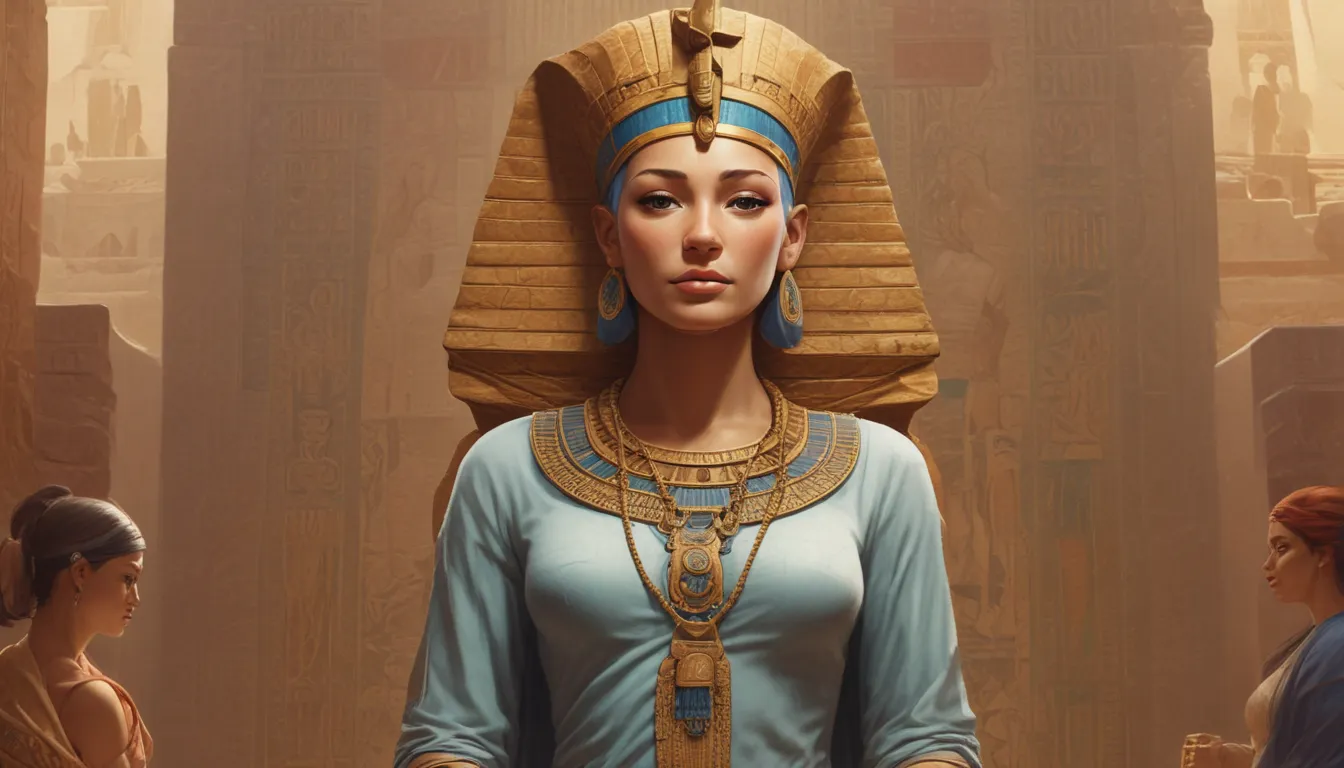The images in our articles may not match the content exactly. They are used to grab your attention, not to show the exact details in the text. The images complement the text but do not replace it.
Have you ever been captivated by the powerful figures of ancient history? Queen Hatshepsut, a pharaoh of ancient Egypt, emerges as one of the most intriguing and influential leaders of her time. Her story is not just about ruling an empire; it’s a narrative of resilience, innovation, and challenging societal norms. Join us on a journey back in time to explore the remarkable life and legacy of Queen Hatshepsut, a woman who defied expectations and left an indelible mark on history.
Exploring the Enigmatic Queen Hatshepsut
Queen Hatshepsut reigned during the 18th Dynasty of ancient Egypt, from around 1478-1458 BC. What sets her apart from other pharaohs is her unique path to power as a woman in a predominantly male-dominated role. Initially serving as regent to her stepson, Thutmose III, Hatshepsut eventually declared herself pharaoh, a bold move that would shape her legacy for centuries to come.
Unconventional Rise to Power
Hatshepsut’s journey to the throne was far from conventional. Following the death of her husband, Thutmose II, she assumed the role of regent for her young stepson, Thutmose III. Over time, she transitioned from regent to a fully-fledged pharaoh, co-ruling with Thutmose III in a groundbreaking display of authority and leadership.
Architectural Marvels of Queen Hatshepsut
One of Hatshepsut’s most enduring legacies lies in her architectural achievements. The Mortuary Temple of Hatshepsut in Deir el-Bahri stands as a testament to her commitment to grandiose and innovative building projects. This awe-inspiring structure showcases her vision and dedication to leaving a lasting mark on the landscape of ancient Egypt.
Economic Prosperity and Trade Expeditions
Hatshepsut’s reign was marked by economic prosperity and strategic trade initiatives. Among her notable achievements was a daring expedition to the Land of Punt, which brought wealth and luxury goods like incense, ivory, and gold to Egypt. These endeavors bolstered the economy and solidified Egypt’s position as a thriving civilization.
Embracing Pharaonic Traditions
To assert her authority as pharaoh, Hatshepsut adopted traditional male pharaoh attire, including the false beard and kilt. This deliberate choice was not merely a fashion statement but a strategic move to align herself with the established image of a powerful Egyptian ruler. By embodying these symbols of authority, she reinforced her status as a legitimate and capable leader.
Religious Devotion and Contributions
In addition to her political and architectural accomplishments, Hatshepsut was known for her deep religious devotion. She made significant contributions to the gods, particularly Amun, through the commissioning of numerous construction projects and statues in his honor. These actions reinforced her divine right to rule and underscored her connection to the spiritual beliefs of the ancient Egyptians.
The Mysterious Circumstances of Her Death
The circumstances surrounding Hatshepsut’s death remain shrouded in mystery to this day. Speculation suggests that her stepson, Thutmose III, may have played a role in her demise, driven by a desire to claim sole power. However, conclusive evidence is lacking, leaving historians and scholars to ponder the enigmatic end of this legendary ruler.
Attempts to Erase Her Legacy
Following her death, concerted efforts were made to erase Hatshepsut’s legacy from history. Many of her images and inscriptions were defaced or destroyed, likely as a means of eliminating her influence and reinforcing the authority of her successors. Despite these attempts, Hatshepsut’s remarkable story would not be extinguished so easily.
Rediscovery and Resurgence
In the 19th century, Hatshepsut’s legacy experienced a revival with the rediscovery of her temple and statues by archaeologists. This rekindling of interest in her life and reign brought her story back into the limelight, solidifying her place as one of Egypt’s most notable pharaohs. Through these archaeological discoveries, her enduring impact on ancient Egypt was once again recognized and celebrated.
Unveiling the Secrets of Hatshepsut’s Mummy
In 2007, an astonishing discovery was made in the Valley of the Kings – the mummy of Hatshepsut. Through DNA analysis, experts confirmed the identity of this royal figure, shedding light on her physical characteristics, health, and lifestyle. This remarkable find provided invaluable insights into the life and reign of Queen Hatshepsut, offering a glimpse into the woman behind the legendary facade.
Legacy and Influence
Hatshepsut’s reign continues to inspire and captivate audiences to this day. Her story serves as a beacon of female empowerment and resilience, challenging traditional narratives of power and gender in ancient Egypt. Through her visionary leadership and groundbreaking accomplishments, she has left an indelible mark on history, inspiring future generations of leaders and trailblazers.
Continuing Debate Over Her Legacy
The legacy of Queen Hatshepsut remains a subject of scholarly debate and speculation among historians and Egyptologists. While some view her as a usurper who seized power from her stepson, others see her as a visionary leader who brought stability and prosperity to Egypt. This ongoing discussion reflects the complexity and significance of her reign in the annals of ancient Egyptian history.
Hatshepsut in Pop Culture
The life and reign of Hatshepsut have captured the imagination of storytellers and artists across various forms of popular culture. From novels and films to documentaries and exhibitions, her story has been reimagined and retold for contemporary audiences. These creative interpretations serve to keep her legacy alive and introduce new generations to the remarkable queen of ancient Egypt.
Unveiling the Future of Hatshepsut’s Research
As archaeological discoveries and technological advancements continue to evolve, our understanding of Hatshepsut’s reign grows deeper and more nuanced. Each new finding offers fresh insights into her life, reign, and enduring impact on ancient Egypt. With ongoing research and exploration, the mysteries surrounding this legendary ruler are gradually being unraveled, ensuring that her legacy endures for generations to come.
Conclusion: A Lasting Legacy of Power and Resilience
In conclusion, Queen Hatshepsut’s reign stands as a testament to the enduring power of leadership, innovation, and resilience. Her achievements in architecture, trade, and governance reverberate through the annals of ancient Egyptian history, inspiring awe and admiration for generations to come. Despite attempts to erase her from history, Hatshepsut’s story has endured, reminding us of the transformative potential of daring to defy boundaries and redefine the status quo. As we unravel the mysteries of this enigmatic queen, we glimpse a woman who defied expectations, challenged norms, and shaped the course of ancient Egypt with ambition and wisdom. Hatshepsut’s legacy is not just a tale of power; it’s a narrative of empowerment, vision, and the enduring spirit of a leader who dared to dream beyond the constraints of her time.






